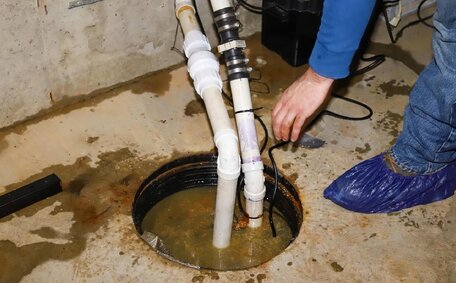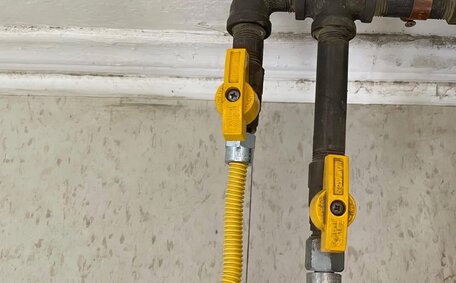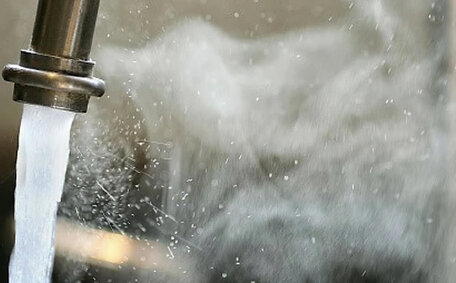Understanding Common Causes of Blocked Drains
Blocked drains are a frequent household inconvenience arising from a myriad of causes. Some of the most common causes of blocked drains include:
- Grease buildup - Disposing of fats, oils, and grease down the drain can result in clogs as they solidify and cling to the interior of your pipes.
- Solid items - Food particles, hair, and debris frequently cause blocked drains as they get lodged in pipes and accumulate.
- Tree roots - Neighbouring tree roots can intrude into underground drainage pipes, disrupting water flow and causing blockages.
Being mindful about what goes into your kitchen drain is key to avoiding problems. For instance, discarding food scraps and coffee grounds into the bin rather than the sink drain prevents buildup over time. Employing drain strainers to capture materials washed down and conducting regular maintenance such as professional drain cleaning can help prevent these issues.
Untreated blocked drains can result in water backup, unpleasant odours, flooding, and property damage. Addressing blocked drains promptly and recognising common causes such as grease, solid obstructions, and tree roots can lead to faster resolution and prevent pipe damage.
Grease and Fat Buildup
Allowing fats, oils and grease to go down the kitchen sink drain can lead to serious pipe clogging over time. As grease cools and solidifies, adding a mix of salt baking soda inside drain pipes can prevent congealment and adhesion, eventually reducing blockages where substances end up immovably lodged. Over time, this residue becomes a thick layer of fatty deposits, often causing blockages that impede water flow.
If you want to clear your blocked drain effectively, addressing grease and fat buildup is a preventable cause when regular cleaning is undertaken. Simply disposing of oil and grease in the bin rather than sending it down your sink can make a significant difference in preventing clogs. Other useful tips include:
- Wiping excess grease off cookware and plates with paper towel before washing
- Using a sink strainer to capture and facilitate the breakdown of food waste
- Running the garbage disposal judiciously to ensure a blocked drain can stay clear
While you may wonder about how can you clear blocked drains with simple methods like boiling water to dissolve grease, it also may introduce undue stress into your PVC pipes, which have a lower heat tolerance. If home remedies are ineffective, seek professional assistance for a reliable solution.
For metal or ceramic pipes in your home, using boiling water by pouring 1-2 kettles of it weekly can help melt some accumulated grease.
Left untreated, the consequences of fat/grease accumulation can be unpleasant and expensive to fix. By making small changes in the kitchen, households can avoid major pipe clogging and drainage issues over time. Stopping fat/grease at the source is vital prevention.
Hair, Soap Scum, and Debris
Hair, soap scum, and small debris are common culprits behind blocked bathroom and kitchen drains.
Soap scum forms a thick residue that sticks to pipes. Meanwhile, small items accidentally dropped down sinks become lodged in pipes.
Using drain strainers is an effective way to catch hair, toilet paper scraps, and other debris before they clog your drains. Strainers should be emptied regularly into the garbage. Covering sinks with strainers while washing hair or preparing food prevents issues caused by items accidentally flushed down.
Even with strainers, following tips prevent debris that trickles down your pipes from turning into a major issue with occasional maintenance. Especially for bathroom sinks and the shower drain, wiping soap scum off fixtures helps avoid buildup. Installing hair catchers can easily prevent blockages by trapping hair and soap residue before they reach the drain.
Every 3-4 months, use a drain snake or cup plunger to tackle a clogged drain and remove accumulated gunk.
Prevention is essential to prevent blocked drains, particularly in safeguarding your bathroom drains from debris, hair, and soap scum. Taking simple ongoing steps saves major pipe cleaning and potential clogs down the road. Heeding these tips to prevent blockages truly pays off when keeping drains clear in kitchens and bathrooms!
Tree Roots
Tree roots can heavily damage your drainage system and cause drain blockages, especially in properties located near large trees. When it comes to water sources, roots can infiltrate cracks and joints in drainage pipes as they grow. Over time, this causes pipe damage and obstruction of water down drain.
Indicators of tree roots causing a drain blockage in your plumbing are:
- Slow draining water
- Frequent drain blockages
- Gurgling sounds from pipes
- Bad smells from drains
- Backed up water and flooding
If you suspect tree roots are an issue that could cause damage, have your plumbing system inspected as promptly as possible. Hydro jet drain cleaning can assist in clearing blocked passages from intruding roots effectively. Nevertheless, permanent solutions like pipe relining or complete repairs are necessary for broken pipes extensively damaged by tree roots.
Prevent blocked drain obstructions caused by roots is crucial with preventative maintenance for properties with large trees. Have your pipes annually inspected by professionals to promptly identify and manage potential root intrusion before significant drainage disruption arises. Old clay pipes in particular are vulnerable as they allow root penetration through cracks in the piping.
While tree roots are naturally seeking water, they can cause major headaches by blocking plumbing. Stay vigilant with regular drain inspections and jet cleaning to nip problems in the bud before pipes become overrun.
Preventative Drain Maintenance
Taking preventative steps to address potential issues is essential for maintaining clear drains and avoiding major blockages. There are several useful Do-It-Yourself methods homeowners can follow for ongoing drain care:
- Install drain strainers in sinks to intercept food particles and other debris, thus preventing blockages.
- Pour half a cup of baking soda vinegar down drains monthly to help your pipes stay free from grease and organic buildup. Let sit for half an hour then flush it down into the drain with hot water.
- Every three months, use a wire hanger or drain snake to remove accumulated hair and soap scum from bathroom and kitchen sinks.
- Have a professional plumber perform an annual camera inspection to check for intruding tree roots or other issues
- Think about fitting hair catchers in shower and sink drains to avert clogs.
Addressing minor drain issues early can prevent considerable expense and disruption later on. Preventative maintenance is crucial for the longevity of pipes and plumbing fixtures. Be proactive by following these diy tips for monthly and quarterly drain care as part of routine home maintenance.
Routine Cleaning and Inspections
Regularly cleaning and inspecting your drains can play a major role in maintenance and preventing build-up that could cause damage your piping system. A brief, weekly drain inspection can quickly detect and prevent minor issues from becoming major.
For an inspection, remove stoppers or strainers and verify that water flows smoothly down the drain. Occasionally pour hot water with lemon juice down your drains to dissolve grease and soap residue. Look out for signs blocked drain, such as slow draining which suggests a partial blockage starting to form.
A professional plumber can deploy specialist tools to locate obstructions deep within the drain. Signs include hair buildup, globs of grease, or debris. Use tongs to gently remove any visible clogs and fully clear out your pipes.
For proactive cleaning monthly, use a soda vinegar reaction by pouring 1⁄2 cup baking soda followed by 1 cup hot vinegar, down sinks and tub drains. Let sit 30 minutes then rinse. Finish by flushing with very hot water.
Early detection of minor clogs can avert serious complications. Integrate drain inspections and preventative DIY cleaning into your regular home upkeep routine.
Using Drain Strainers and Catchers
Installing drain strainers in your sink, shower, and tub prevents an array of particles from entering the intricate drainage system of your household. As these items wash down drains over time, they accumulate inside pipes leading to major clogging issues.
Drain strainers are inexpensive, easy to install devices that protect against clogged drains and save on expensive plumbing repairs down the road. They fit into sink and tub drains to filter out hair, food scraps, and other debris while still allowing the flow of water to pass through freely.
To make sure of best results, drain strainers should be cleaned regularly. Simply remove and clear any built up debris trapped against the screen and dispose into the trash as needed. Monthly, the strainer itself should be removed and scrubbed to remove grime accumulation.
Alternatively, hair catchers can also be installed inside drains to serve a similar preventative function. These small plastic devices collect shed hair before it enters pipes. Hair catchers just require occasional emptying as they fill up.
By preventing hair and debris from ever entering the plumbing system, drain strainers and hair catchers keep pipes clear and free flowing. This simple yet vital first line of defence should be utilised in all kitchen and bathroom sinks and tub drains.
Natural Drain Cleaning Methods
Natural substances offer a cost-effective and gentle alternative to harsh chemicals for clearing food remnants and clogs from your drain. Engage with a method of how you can use simple ingredients like baking soda, vinegar, and boiling water to help dissolve blockages when used properly.
One of the most popular natural methods for resolving a drain clog involves baking soda and vinegar. To use this technique:
- Pour 1⁄2 cup of baking soda down the drain, not the toilet, to help avoid blockages.
- Follow with one cup of white vinegar. The resulting chemical reaction will cause fizzing and bubbling as the buildup breaks down.
- Let the mix settle for 5-10 minutes, then pour additional boiling hot water as needed to ensure the reaction can fully unblock drains.
- Conclude by ensuring to pour hot water down the drain to complete the process. This will help rinse away any remaining gunk.
For tenacious clogs, repeat the baking soda and vinegar process 2-3 times to dislodge blockages, using hot water to wash away residual debris.
Pouring boiling water with salt can dissolve fatty obstructions and improve water flow. Just like when using any chemical drain cleaner, exercise caution and allow pipes to fully cool if boiling water proves ineffective.
For those preferring eco-friendlier methods, natural solutions can be just as effective to clear a blocked drain without harsh chemicals. When followed by preventative steps like drain strainers and routine maintenance, these DIY methods help keep pipes clear.
When to Call a Professional Plumber
Though you can resolve minor drain problems with natural cleaners at home, some scenarios require a professional plumber’s expertise:
- Water is backing up from drains into sinks, tubs, or toilets
- You have used DIY drain cleaners with no improvement
- Drains are very slow-moving or completely clogged despite attempts to clear them
- Gurgling noises are heard from piping whenever water drains
- There is a persistent bad smell coming from drains
- You suspect collapsed piping or pipe damage is causing drainage issues
The trained team at Kellyville Plumbing uses a hydro jet system, cameras, and their expertise for thorough inspections and clearing stubborn clogs beyond DIY solutions.
We utilise advanced diagnostics to pinpoint issues and deliver enduring solutions. Contact us on 1300 349 338 or at [email protected] to schedule an inspection. Nipping problems in the bud before further damage prevents costlier repairs later.
Signs You Need a Professional Drain Cleaning
Certain warning signs may suggest that your drain issues require professional intervention. Additionally, standing water collecting around sinks or toilets from backed up drains signifies a deeper problem. At this stage, persisting with DIY efforts without consulting a plumber could aggravate the issues, indicating the need for professional help. We recommend calling 1300 349 338 the moment you observe signs suggesting professional expertise is needed.
If you have applied DIY methods like boiling water, plungers, drain snakes or commercial cleaners without improvement, it likely means debris is compacted too densely for home solutions. Slow flowing water, multiple drain clogs in different fixtures, visible pipe damage or bubbling sounds are other red flags. Our experts at Kellyville Plumbing have high-pressure hydro jetting to clear tough clogs and camera inspection to assess drainage systems for damage.






